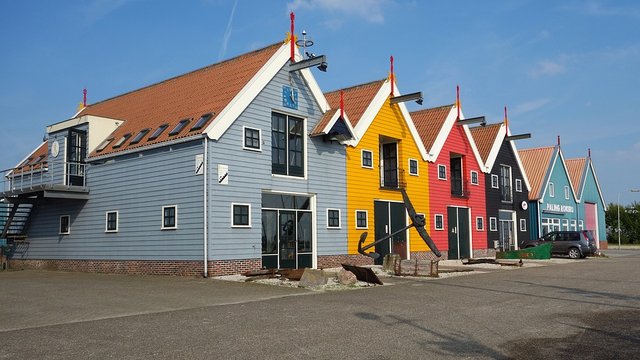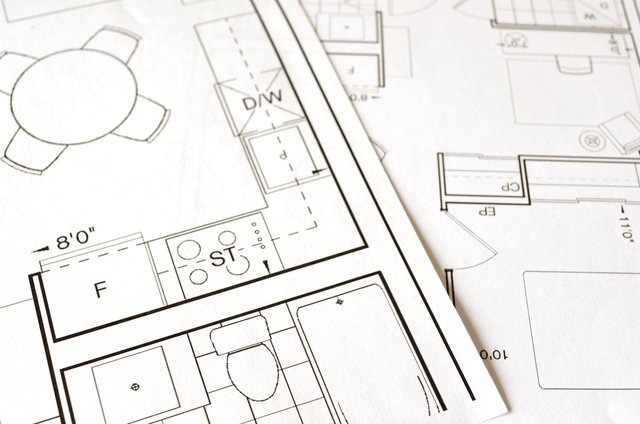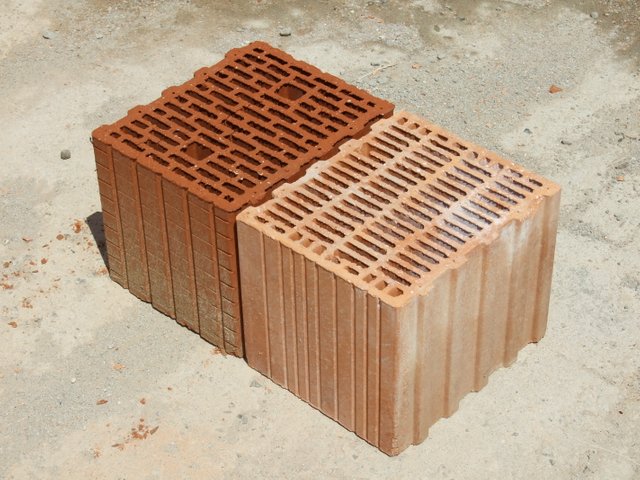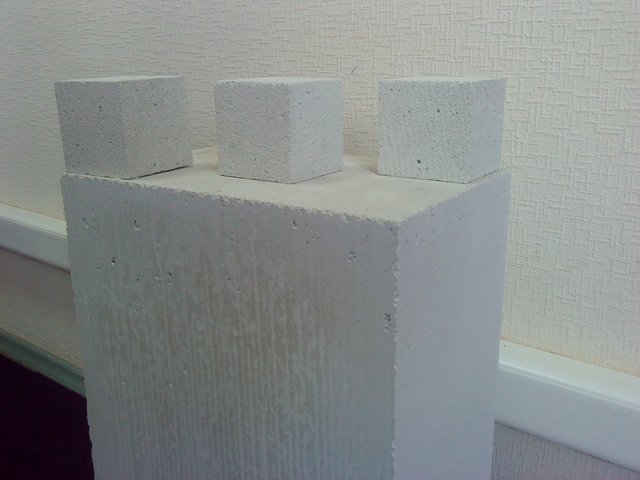Building a cheap and energy-efficient smarter house by understanding basic science
You have seen some examples online but you never thought it was possible or that it was something you would be able to do. Well, it's wrong, I won't say it's simple but it's something that will bring a lot of satisfaction, especially if you are a fan of DIY things like me or you just want to build something from scratch.
Do some science before engaging in such a project
The financial theory says that a house is not an asset but a liability. This means that you need to calculate your expenses well before starting to invest in something that will eat into your finances.
Another thing you need to pay attention to is the location of the land that you wish to buy. Make sure you have at least 2 ways of getting there, in case one of them is closed or flooded or simply blocked by traffic, at least one of them that should allow you to walk or use public transport or a bike. This also means that you will have to find a balance between distance to the city, price, and surface of the land. The closer to the city, the less surface will be available on the same amount of money invested.
As this is a smart house project, I would also try to look deeper into the factors that will affect the upkeep of the place. For example, you have the option to check the wind data on the map, by using thistool. You can even go back in time, zoom in and get a basic idea of how the winds are at your location. I advise you to click it even if you don't want to build anything as it will bring you 10 minutes of free learning and discoveries :D

Screenshot of the website, data is supplied by weather satellites and archived for your convenience.
Ideally, try to find a location that has consistent wind. This could be used later for buying and installing a wind turbine later on, but will also provide insight into how should your house be positioned and insulated. If you are living in a cool climate you might want to only expose one side of your house to the winds. If you are living in a warm environment with temperatures that require artificial cooling of your house, you could position it so that the house corners "cut" into the wind and provide cooling along two of the walls.

Quick sketch made by me. It simplifies a lot of the thermodynamics :)
I am basing my affirmations on science, more exactly on the Laws of Thermodynamics. Newton's Cooling law specifically states that a hot object will always transfer its heat to the cooler air, which is then dissipated into the environment:

This is the cooling rate, which is measured in Watts per second. h is the overall heat loss coefficient, A is the surface area exposed to the wind and ΔT(t) is the difference in temperature between the object and the airflow, and it is displayed as a function of time, since it increases with exposure.
This tells us that in order to further build an efficient house we need to either reduce the surface area exposed to wind, use insulating building materials or further insulate the house using additional materials.
The benefits of building together for efficiency
Another way of building for energy-efficiency would be to link two or more houses together. These are called Duplex buildings or Housing rows. The communities living in the colder climates took advantage of this in history, as it reduces the cost to insulate and even reduces the basic building materials needs and thus cost. Building a row of houses could even help if you live in a colder climate with high loads of snowfall as they help block snow from being blown by the wind. So if you have your access road right in front of your house you will get the benefit of never having to shovel your way out in the morning.
 Row of houses share up to two walls thus reducing the cost and increasing thermal efficiency.
Row of houses share up to two walls thus reducing the cost and increasing thermal efficiency.
You must also take into account your privacy needs and the fact that no matter how good the insulation is, you will also hear vibrations, loud noises or your neighbors' power drill from time to time. Also, when spending time in your own backyard you might not actually be alone since the yards will have to match each of the houses width.
How big do you actually need a house to be?
There are specific studies and surveys all over the internet, comparing house surfaces and what their inhabitants think is adequate. When building your own house, you must take into account the basic needs of you and your family as well as plan a little for the future. For a couple or a small family you will surely need a living room, a kitchen, at least two or three bedrooms if you plan on having children and guests staying over, and two bathrooms. I am sure that my estimation is based on my culture and that other people have other needs, so plan it according to your own needs, but don't overbuild.
As for the size of the rooms, I will not go into design or furniture, I will just try to focus on the physiological, psychological and social needs of people.

Quick Sketch, visual cues help you remember things that are important.
To maintain your eye health, studies have shown that you need to use the 20-20-20 rule, which means that every 20 minutes you need to take a break for 20 seconds and look at an object 20 feet away (that is 6 meters, which is supposed to be the distance at which the eye muscles are the most relaxed. So you have your first dimension for the rooms in which you spend time. You don't need that for the bedroom or bathroom since you clearly don't spend enough time there to pose a health risk.
Psychologically, you need your living room to be bigger since it can be used as a place to gather and socialize. You can integrate the dining room in it since this will allow people to socialize even while performing different daily activities. The kitchen should also be a part of the living space for the same reason, otherwise the one cooking will feel like being excluded and will avoid spending time there. All the rooms need to be light, sufficient light and sunlight can help the psych a lot. Bedrooms can and should be smaller, as humans have maintained the primal needs for cozy and warm shelter. A bedroom sized at 4 by 3 meters (13 by 10 feet) is acceptable and can fit a normal size bed, while still making access easy.
To sum everything up:
- Living room should have a length of more than 6 meters. Total estimated surface of 30 square meters.
- Bedrooms (one for yourself, one for the children and one for any guests) 12 square meters each so 36 square meters total.
- Bathrooms of 6-7 square meters. 12 square meters total.
- A normal kitchen would have another 10 square meters, if the dining area is placed in the living room.
I am against Study Rooms, as this type of room separates people and although it offers some privacy when needed it is not practical in my opinion. My desk resides in the living room since most of the family activities revolve around the use of the computer as a source of input to the TV and sound system. But again, this is not a rule.
Total house surface I have estimated is 88 square meters. Let's add hallways and a staircase and we have close to 100 square meters or roughly 1100 feet. Probably dividing it between two floors to preserve heating and reduce the footprint, and this will also allow for a reduced attic which can prove helpful in storage and further act as an insulation help.
Building materials
Wood:| Adantages | Disadvantages |
|---|---|
| Good insulation | Poor soundproofing |
| Structurally safe | Susceptible to molds, insects |
| Fast to build | Dry wood twists and cracks |
| Reduced carbon footprint | Fire is a real problem |
| Lower average cost | Moisture can reduce lifetime |
| Somewhat easy to repair | Extreme weather is a problem |
Brick or Aerated autoclaved concrete
| Advantages | Disadvantages |
|---|---|
| Flexible design | Longer time to build |
| Large spaces | Higher cost |
| Earthquake proof | Pillars and reinforcements are visible |
| High structural loads | Brick has low torsion resistence |
| Very long life | Larger carbon footprint |
| Fire resistant | Heavier structure |
| Excellent insulation | |
| Humidity resistant |
Brick seems to be the better building material, despite having a bigger carbon footprint, it will live long after one or two wooden houses will be constructed/reconstructed. When building using brick, you need to take into account the type of brick that is used. There is a huge offer of brick solutions, at least in Europe, with hundreds if not thousands of different manufacturers. The brick can be used alone or in conjunction with concrete, at least for the foundation of the house and the subsequent floors.
I am not going to cover insulation properties right now but the open spaces inside the brick or the bubbles in the AAC ( autoclaved aerated concrete) are what makes this kind of brick a very good insulator.
Roof materials
Wood, metal and ceramic are usually used. Wood shingles are very attractive but as with the aforementioned problems, they are not very cost effective. Metal roofing is generally the most widely used as it balances both the resistance against hail and winds, it is very light when compared to the ceramic tiles, it is very easy to install, usually coming in big sheets that can cover a small house in 10 or 15 pieces.
Ceramic tiles are the most resistant and offer a great protection in time but they take a lot to install and need a very good inner structure to support them. In our quest to build an energy efficient house they might prove unessential since photovoltaic panels will be fixed on top of the roof, covering and reducing the effects of such roofing and increasing the structural stress even more.
The roof should have an increased slope in case you are building in a cold place where snowfall is a problem since you want to prevent extreme accumulation of snow on the roof. Snow guards can be placed to prevent snow from rolling off at once when it starts to melt and injuring people standing around.
The orientation of the roof should follow the position of the sun at noon. This way the efficiency of a future photovoltaic panel will be maximized.
Conclusions
Building a house is fun and can make you feel a sense of accomplishment. You can also reduce your carbon footprint by making it work off the grid. There is no need to build big. You don't need that gym, there are countless other places to exercise. Don't build that swimming pool, you will rarely use it and you will pay for it more than you know. I will continue to cover the next steps of building the house as I can't possibly cover everything in one article:
- Insulation (walls, roof, doors and windows). There are many amazing materials and solutions
- Ground water pumping, filtration, potabilization and treatment systems
- Energy efficient heating and cooling with smart wifi controls
- Photovoltaic system integration for true off-grid operation
To further quench your curiosity, I embarked on building my own house when I was 22. After 8 years and a lot of hours (thousands, probably), I have acquired much knowledge that helped me almost finish it :)
Every decision was documented and made by me, materials were chosen and bought by me, most of the times even transported with my own car, with plenty of different teams of workers over a very long period of time, as I started to build it when I was just in the second year of my first serious job and I wanted to build it just using monthly profits that me and my girlfriend had at that time, without growing even more in debt. Been a wild ride, but at least I think I can share my insights with you. Stay happy and keep doing the things that you like (if they don't interfere with the likes of other people, of course).
Don't be afraid to ask me anything on the matter as I can't cover everything in a single article, or simply share how you build houses in your area.








Your wind analysis at the top of your post made me think of this:
I once learned that the smaller trees on the edges of the forests protect the larger trees in the interior from high winds. Tree size goes from small to medium to large as you go to the interior.
So it seems that cities that can break up high winds might be helpful for reducing wind loads and thermal energy losses.
Yes, and it does. I live at the edge of Bucharest, next to a lake, so no protection from the Northern winds. In the city, there are always 5 degrees Celsius more than I have here, despite a distance of only 5-6 km to the city center. Winter or summer, it is the same, a few more degrees in the city. But the city is polluted and there are not enough parks and it has the most intense traffic in Europe, so I wouldn't like to live in the middle of it. Plus, the cost of a house in the city would also be prohibitive.
Nice article, especially the spacing part.
Still, ain't that easy! There's nothing simple about building a house 😁.
To set up a tent, now that's simple 😋. Building a house it requires a lot of knowledge, time and patience. Unless you want to rebuild everything as soon as is done.
Of course nowadays there are so many technologies and easy to set up already made houses. But a brick and mortar house, that's a whole different story 😃.
First of all, depending on where the house is built. You have to comply with the local regulations when it comes to which materials and design can be used.
For the cheapest way, (somewhere in the countryside) earthbags are the best for instance. Add to that a soil-water heat pump powered by a fotovoltaic panel and here you go.
I know, I was not trying to tell anyone to start building it up without specialized help, I am just trying to cover design issues that maybe even some architects overlook. The EU regulations are one of the strictest and still, they don't limit us much about design and materials, it's only height limit and property edge spacing that is covered in most regulations. And when building outside of the city you don't have to comply with any given design or "look". Some places like Monaco and Switzerland have stricter rules though.
Your article is very informative and useful, especially as I am planning to build a passive house starting with next year 😃. I reread my comment and realized is quite out of context 😅. I don't know where that came from 😂.
I would like to read more about your construction project. I know you are going to build something from scratch, so I will follow you closely. A passive house is even harder than what I did. I can offer assistance, I can even supply you with some building materials, provided that you can pick them up :D
But we will talk more once I know what you have in mind.
Thank you for your offer, I will keep that in mind 😁. Is going to take a while until even start to actually planning. As my wife is saying, money before dreams 😅. I have a too long history in construction field, also quite passionate about renewable energy and way too many other related to self-sufficiency things. Obviously I don't know everything, and I am sure I will find your advices truly valuable. The type of the analysis presented in this very article is a good example of things I am not good at 😃.
I never knew we could have DIY houses too. Sincerely it would be worth the try.
Getting an experienced hand would really help save some stress though.
Of course, I was only overseeing the structural jobs, I didn't lay the bricks or the concrete myself. That would be unsafe. But in some cases I have opted for thicker iron rebar or even rebar in the bricks to prevent whole walls collapse in case of a whiplash earthquake perpendicular on the bedroom walls. Just stick rebar in one of the brick vertical compartment ( you have a picture up there) and you add further elasticity to the wall, even if the mortar crumbles.
We really should care more about efficient way of using our resources..!!!
With the evergrowing population, securing suitable residence for everyone is a tough challenge...
Building sustainable smarter houses can fight this problem well..!
But sadly, most of us aren't aware of this global issue and we keep building unnecessarily bigger houses..!!
Hope this mentality change before its too late..!
I hope so too. It's all about education since nobody is taught about self-sufficiency or taking only what you can take. We wouldn't have the 1% holding on to 90% of the global wealth if that was really a thing.
xactly..! evryone should have a minimum of self-awareness..!
the world would be a way better place then..!!!
We might be able to get there, slowly!
Lol... I am amazed on how you could do alot of things. These post teaches about economics as explained with your financial theory and a lot more could be gotten on how to get/spot a good location for a house.
Good work man.
Thanks! Yes, once I start writing I realize I have so much I could say. I know much more about financial education and basic income and even about so-called utopic communities that could actually work if our mentality changes. We just more people to evolve, educate themselves and work towards the same goal. But we can't do this while the same people are starving or working 3 jobs to cover the basic needs of their family.
so useful, thank you
Congratulations! This post has been added to our growing directory of Steemit "how to" posts, upvoted and resteemed. Sotall curates posts for the Homesteading/Survival/Foraging/Prepper communities. If you haven't done so already, you can claim your badge along with the code to add to your posts to let the world know you have chosen to help others Survive, Thrive and be Prepared! Click here to get the code
Thanks! I have missed it somehow, but I saw it now! I will write more on the subject. I already have written another. Think of it as #homesteading on steroids :D
Such an informative enriching, I am tempted to ask whether you studied architecture or surveying, but all the same the article was quite l expository
... Building a house though not so easy but the fun and pleasure derive is quite amazing especially if the house is ones own.
Kudos bro.... More grace
No, I just have an open mind and I pay attention to things and read a lot whenever I have to do something important. If you don't do it yourself, you risk spending huge amounts of money on whatever the construction company tells you to. And their employees are not that good so many of the fine works you are better off doing yourself. You will see on my next article about water filtration and boreholes some of the issues I had with the workers.
Hi @alexdory .I really found this post to be interesting. I believe that house building system might differ from culture to culture. In my own part of the world, we normally use bricks for building construction, and metal sheet for the roofing, though the use of ceramic tile has become order of the day among the affluent.It actually amaze me when you say you bought most of the materials yourself. Well that's good.
My question is what do you mean by carbon footprint? . Is it same with emision of carbon?
Yes, I had actually loaded my car's trunk with sacks of cement, carried iron rebar on the roof or in the car. Same with piping, electrical wires and most of the materials that would physically fit in the car, even a few that didn't quite fit :D
Oh, I drive a small family car. Never underestimate the power of engineering.
It wouldn't have been cost effective to order small quantities of building materials and waiting 3-4 days in order to be delivered by them (plus a 30$ shipment tax). And it would be delivered in a huge 3 or 5 ton truck :)
When producing heat treated ceramic building materials or even metals, mortars or paint, there are a lot of carbon emissions, depends on the manufacturer. Sometimes the more environmental friendly option would be to simply cut the wood from the forest and use it, and then replaced the same way when its life is done.
Okay.Thanks, actually it's an educative post.So getting the material yourself is cost effective
Only because I chose to build the house over a long time. I would contract teams of workers for a specific task (like excavating and digging a borehole or installing the rebar and pouring the concrete for the underground technical and treatment room).
They only needed a limited amount of materials for each task and the next task would happen after a few months. I would save money in that time and insert another coin :D
I love your informative posts! Keep up the great work @alexdory!
Thanks a lot! Just doing my part. I will write more! Trying to be split across many platforms and projects :P